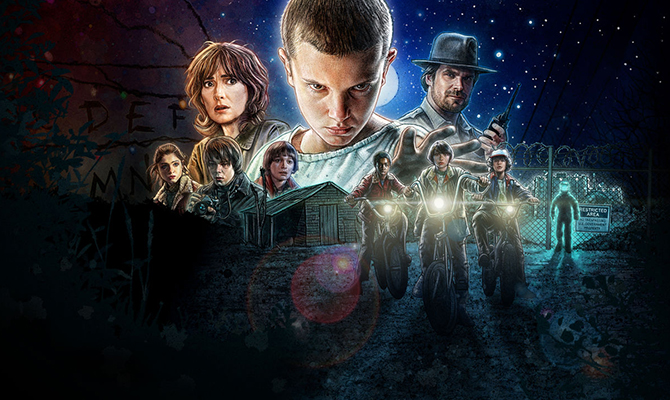

Part Spielberg, part Stephen King, part George Lucas and all 80s, Netflix’s breakout show “Stranger Thing” is a triumph even though it falls into the occasional cliché. Created by the Duffer Brothers, and starring Winona Ryder and David Harbour, “Stranger Things” tells the story of a sleepy Indiana town turned upside down by the mysterious disappearance of 12-year-old Will Byers (Noah Schnapp). Will’s mother, Joyce (Ryder) frantically searches for him and goes down the rabbit hole, soon discovering that a secret government lab may have something to do with the disappearance of her son. Meanwhile, Will’s friends Mike (Finn Wolfhard), Dustin (Gaten Matarazzo) and Lucas (Caleb McLaughlin) discover a psychokinetic girl named Eleven (Millie Bobby Brown), who may turn out to be the key to finding Will.
“Stranger Things” categorizes itself as a drama, but there are many Lovecraftian elements — most notably, the show’s monster. Without spoiling too much, “Stranger Things” keeps its monster at bay for several episodes, only showing split-second shots of it to increase the tension and horror for the viewer. The Duffer Brothers are not afraid to stick to their script, even though it makes for a relatively slow first few episodes. This is perhaps one of the show’s best qualities — it produces an intense fear of the unknown and creates suspense for viewers yearning to see what happens next.
Another major strength of the series is the soundtrack. Much like how “Guardians of the Galaxy” tapped into 1970s nostalgia through its soundtrack, “Stranger Things” does the same thing with the 1980s. Drawing on bands like Joy Division, New Order, the Clash and Modern English, among many others, the Duffer Brothers use the soundtrack to effectively convey the time period and to establish the dark and enigmatic aesthetic of the show.
“Stranger Things” is not without its faults. The show is steeped in Cold War clichés — for instance, the government lab (spoiler alert) uses Eleven as a “super weapon” against the Soviets. Moreover, the horror that the show’s protagonists face, an undeniably evil monster, is a traditional hallmark of simpler times. The Duffer Brothers rid the show of ambiguity and shades of grey. Contrastingly, shows like “Game of Thrones”, “The Walking Dead” and “Breaking Bad” all portray evil as unclear or uncertain. George R.R. Martin, author of “Game of Thrones”, has himself said, “In real life, the hardest aspect of the battle between good and evil is determining which is which. “There is something reassuring about knowing that the villain you are fighting against in “Stranger Things” is unambiguously evil. There are no moral conundrums, no “should I or shouldn’t I” — just action.
In other shows, the simplicity of the villain would make for one-dimensional television. And, in a way, the supremely evil villain-monster is a little ridiculous and over the top. However, because “Stranger Things” makes us pine for the past, and has wonderfully relatable characters — especially the trio of Mike, Dustin and Lucas — the lack of ambiguity is charming, as it reminds us of how things (supposedly) used to be.